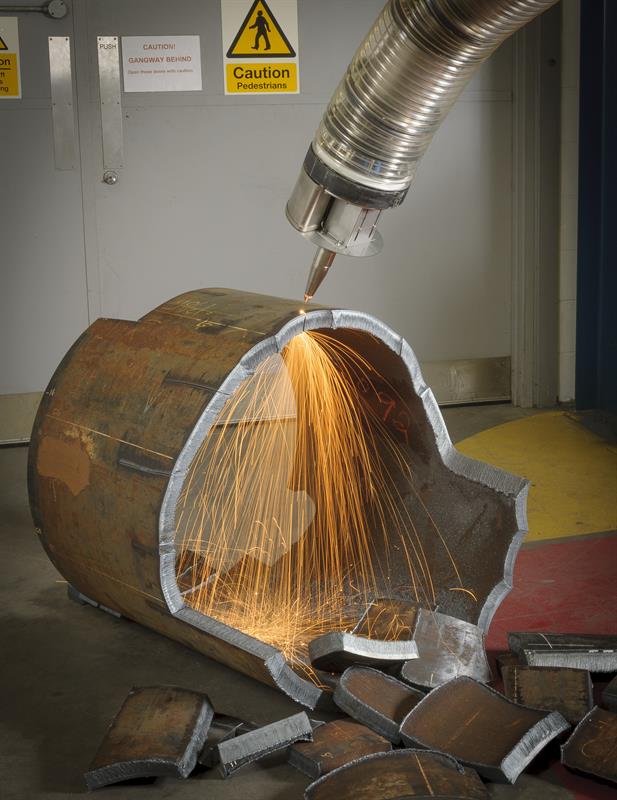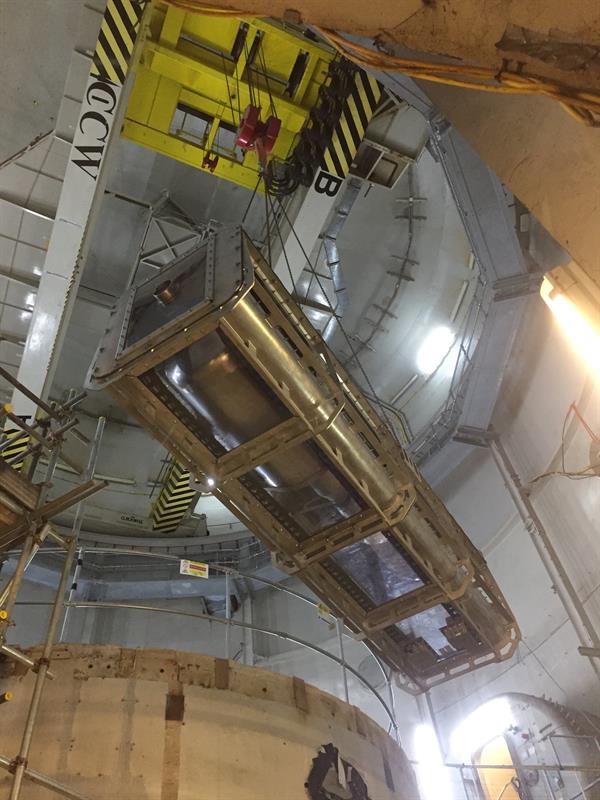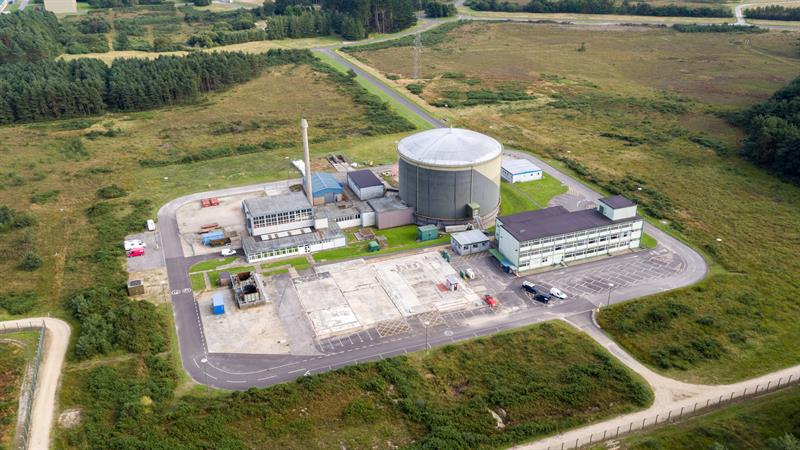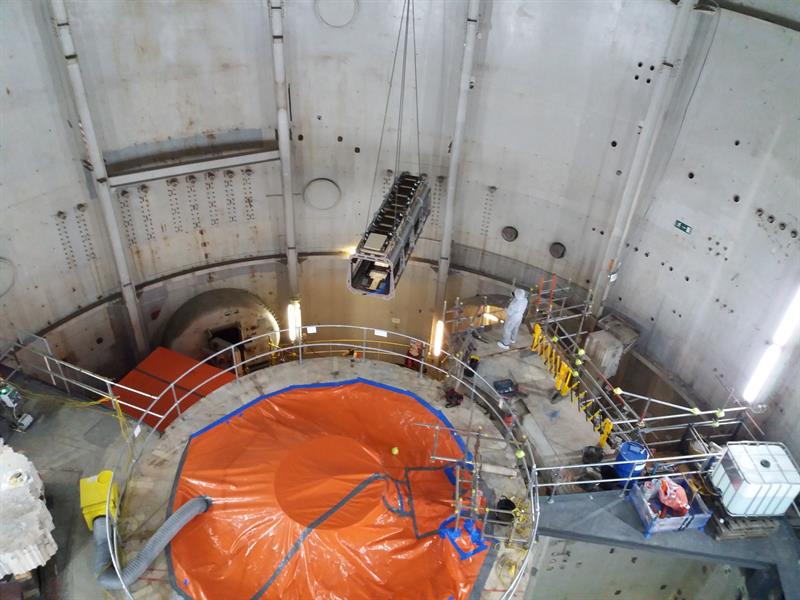62 years later, however, the country faces the immense challenge of decommissioning across 17 nuclear sites, a process that will take more than a century and involve the expenditure of an estimated £118 billion pounds over that period.
At the heart of this process, which is the Nuclear Decommissioning Authority, which was formed in 2005 and holds responsibility for this daunting task. Giving some idea of the scale of the operation, the NDA’s head of technology, Professor Melanie Brownridge says: “These sites date back to the post-war era when the UK was pioneering nuclear power. There are several different types of power station and design variations within reactor classes, so that means there is no ‘decommissioning blueprint’ that we’re able to apply to fit all the sites.”
One of the key ways in which this process is being addressed is by investment in cutting edge technologies to facilitate it. This means that the decommissioning process has become a hub for attracting and funding new technologies throughout the UK.
 Says Professor Brownridge: “With that diversity of operation comes a diversity of challenge as well. This will require very different types of technology and thinking, which is why the commitment to R&D is so important. Some of this will involve existing technologies, but we still have to ensure we are thinking innovatively.”
Says Professor Brownridge: “With that diversity of operation comes a diversity of challenge as well. This will require very different types of technology and thinking, which is why the commitment to R&D is so important. Some of this will involve existing technologies, but we still have to ensure we are thinking innovatively.”
Some of the challenges posed by the decommissioning process are self-evident. The levels of radioactivity in some sites is such as to make a human presence in them for any significant length of time impossible. This has meant that remote technologies have been a major focus for the NDA’s research and development effort.
“For some of the facilities,” says Professor Brownridge. “It’s not easy to gain access to them for a number of reasons. One of these may be the levels of radiation, which may limit the time during which someone could go in there. So those are the times when you have to think a little bit more creatively and innovatively about using remote technologies that allow us to remove the worker from the hazard.”
These remote technologies take a number of forms, including using virtual reality to gain a better understanding of the challenge, using robots and remote transportation vehicles. However, the challenge in these cases can be accessing the expertise necessary to achieve the desired result.
NDA does retain a strategic R&D arm for estate-wide opportunities across different sites. It also often collaborates with other bodies for funding, one of which is the government’s innovation arm Innovate UK.NDA funding is leveraged by further funding from these organisations.
However, Professor Brownridge adds: “About five or six years ago we had a look at how effective we were at engaging with innovative ideas at an early stage and decided to try something different to the methods I outlined earlier. So we worked with Innovate UK to see if we could find a different space for innovation to flourish.”
 The ‘different space’ has come in the form of innovation competitions inviting entries from and offering funding for those able to deliver technologies that meet the NDA’s needs.
The ‘different space’ has come in the form of innovation competitions inviting entries from and offering funding for those able to deliver technologies that meet the NDA’s needs.
The most recent of these came last year, when the NDA and Innovate UK launched a search for innovative technologies that could be combined into a single seamless process for use in facilities being decommissioned
Working closely with Sellafield Ltd, which will use the technology, submissions to a competitive process were invited from all industrial sectors.Five promising ideas have now made it through to the final stages after being whittled down from a shortlist of 15.The newly formed consortia are each set to receive up to £1.5 million to build prototype demonstrators for testing in a simulated radioactive environment.
Conventional approaches to working in high-hazard environments involve teams of workers, clad in protective, air-fed suits, who would be restricted to working no more than a few hours at a time.The process is extremely time-consuming, costly and poses risks to the workers.
The goal of Sellafield and the NDA is to reduce risks to workers, increase productivity, deal efficiently with waste, reduce timescales and cut overall costs to the taxpayer:safer, faster, cheaper. This is complemented by the role of Innovate UK which is looking to drive productivity and growth in the UK through the support and implementation of innovation.
All the projects are being developed by collaborative consortia formed specifically for this competition.The participating organisations, almost 30 in total, include small businesses, large corporations and academic institutions. This, according to Professor Brownridge, is very much in line with the general trend of these competitions. “The projects that have tended to get further,” she says, “have often been the ones involving multiple organisations working together. This will often involve collaboration, where perhaps the SME has brought the idea, such as the use of a drone as a platform – has worked with another SME that has found a novel way of characterising the radiation levels in a facility.”
 The winning project – or projects – could be put to work at Sellafield’s Thermal Oxide Reprocessing Plant (THORP) and Magnox Reprocessing Plant, which are both due to close by 2020.After closure, scores of rooms, or ‘cells’, at the facilities must be cleaned out, with the waste safely treated for packing and storage.
The winning project – or projects – could be put to work at Sellafield’s Thermal Oxide Reprocessing Plant (THORP) and Magnox Reprocessing Plant, which are both due to close by 2020.After closure, scores of rooms, or ‘cells’, at the facilities must be cleaned out, with the waste safely treated for packing and storage.
“It’s a huge challenge,” says Professor Brownridge. “The new integrated system must establish what’s inside the cells, measure the radioactivity, access spaces that have been sealed for years, cut up the contents (including large vessels and many miles of pipework), segregate the waste, then remove it for treatment and safe storage.Radioactivity levels are extremely high, restricting workforce access, so the work must be carried out remotely.”
A number of the technologies are tried and tested nuclear favourites; some are well established in other industries; others are brand new. One of the challenges will be to develop a smooth interaction between all the different component parts.
Industries that have been keen to step up to the challenge include computer gaming, fume extraction, sea-fishing, medical imaging, oil and gas as well as space and defence.
Many ideas include robots, which range in size from large industrial giants to small ant-like devices that can work collectively and easily be replaced in the event of a breakdown. One of the auto-mapping systems was developed for use in missions to Mars and will be adapted to scan the interior of a radioactive cell.
Some projects will immerse operatives in a virtual world, where they will intuitively be able to control robots and equipment as if they were actually inside the cells.
 The competitive approach has been shown to pay dividends. One of the most eye-catching devices came when, in November 2016, the LaserSnake project from OC Robotics won the Technology/Innovation Implementation Award at the Nuclear Decommissioning Authority Supply Chain Awards, recognising the innovation and collaboration required to take technology innovation through to successful implementation at a Site License Company.
The competitive approach has been shown to pay dividends. One of the most eye-catching devices came when, in November 2016, the LaserSnake project from OC Robotics won the Technology/Innovation Implementation Award at the Nuclear Decommissioning Authority Supply Chain Awards, recognising the innovation and collaboration required to take technology innovation through to successful implementation at a Site License Company.
During July and August 2016, the LaserSnake (integrated snake-arm robot and laser cutting technologies) system successfully completed a world first: active deployment in a radioactive cell in the First Generation Reprocessing Plant at Sellafield – by reducing in size a dissolver vessel.
Deployed by OC Robotics and TWI in conjunction with Sellafield, the LaserSnake system has since been put to work on the highly radioactive core of the redundant DRAGON reactor at Winfrith in Dorset. The long, flexible snake-arm robot was passed through a narrow hole in the 3m thick concrete around the core. It sliced through a 400mm diameter vessel.
Contractor OC Robotics was called in by the Magnox team decommissioning DRAGON when it became clear that removing the vessel, known as the Purge Gas Pre-Cooler (PGPC), would be a challenging task, with one end joined to the core in the high radiation area behind the concrete shielding and several steel plates, while the other end extended outside the shielding.
The laser snake technology, developed by OC Robotics and TWI with R&D funding from the NDA, seemed perfect: controlled from a distance by specialist operators, LaserSnake can squeeze through a small access hole, manoeuvre easily inside a very confined space and cut multiple layers with its high-powered laser. This allowed the work to be carried out inside the existing radiation shielding of the reactor.
Although LaserSnake had previously been deployed at Sellafield, the thick pipework, complex layout of the PGPC, and limited access meant it was necessary to prepare two mock-ups to allow comprehensive testing and rehearsals to take place, before making the cuts for real. In the end, less than three hours of actual cutting time was needed to free the PGPC from the reactor core.
Magnox senior project manager, Andy Philps said: “We believe this is the first time that laser-cutting technology has been deployed directly on the core of a nuclear reactor. The ability of the LaserSnake to carry out ‘Keyhole Surgery’ on the reactor core meant that the work could be carried out using existing protective shielding. This has saved at least £200k and the radiation dose that would have accompanied building additional infrastructure, and saved four weeks on the programme’s critical path. It has also enabled us to remove this component earlier than originally planned.”
Professor Brownridge says: “This is an excellent example of how early NDA R&D funding support enabled the technology to grow from an exploration of whether laser-cutting could actually be adapted for nuclear into a system that, with further funding and collaborative working, is now mature and being successfully deployed on a number of our sites.”
Not all the technology to have emerged from the decommissioning process has been related to remote operations or robotics, however. Another area of innovation has been in the waste treatment process, where vitrification (essentially turning the waste into glass). While not ready for deployment yet and requiring considerable further development, the idea is that technology will be developed to a point that will allow it to be used not just on higher level radioactive waste, but for a much wider range of waste.
Matt Buckley, the NDA’s higher activity waste strategy development manager, says of this project: “Traditionally, for intermediate level waste, we’ve been reliant on cement encapsulation and robust containment. For some of the wastes that might have a significantly reactive component and which come in sufficient volumes, there is a potential benefit in a technology that both reduces the volume of waste and, by the application of heat, can ‘knock out’ some of the more chemically reactive elements in that waste. The actual end product that you get is generally passive and stable, which means it’s easier to deal with when it comes to storage and disposal.”
Clearly the ability to access a wide range of technological solutions is of enormous value to an organisation like the NDA that is tasked with undertaking such a huge, complex and multi-faceted task as decommissioning the UK’s earliest nuclear facilities. Obviously, over the years, the nature of the challenges faced will change, something Professor Brownridge is carefult to acknowledge.
“In time,” she says, “We’ll move from routine processing operations to what we call ‘broad front decommissioning’ of sites like Sellafield. And while we have plans in place, there’s a long time associated with those operations.
The mission is of such a long duration that the nature of the challenge is certain to change over time. The way of dealing with that is by being flexible in terms of how we assess our R&D needs and having that technical expertise available will be crucial to that.”





